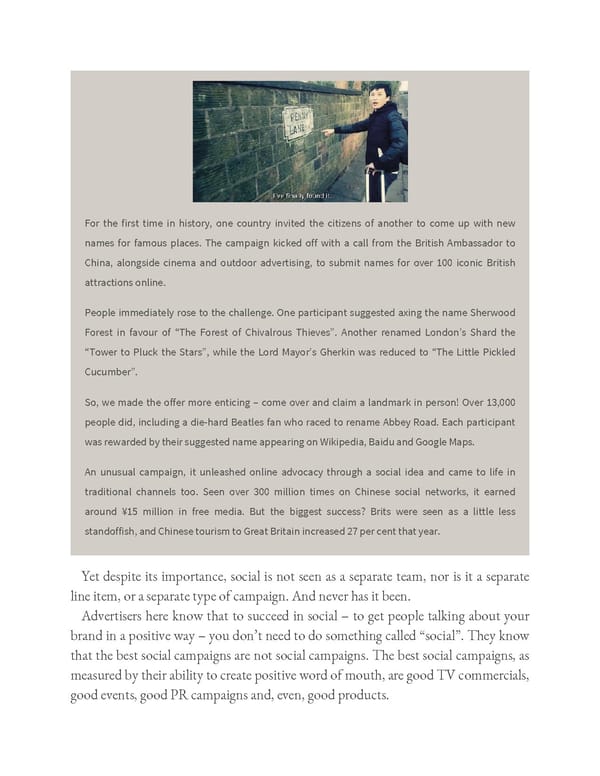For the first time in history, one country invited the citizens of another to come up with new names for famous places. The campaign kicked off with a call from the British Ambassador to China, alongside cinema and outdoor advertising, to submit names for over 100 iconic British attractions online. People immediately rose to the challenge. One participant suggested axing the name Sherwood Forest in favour of “The Forest of Chivalrous Thieves”. Another renamed London’s Shard the “Tower to Pluck the Stars”, while the Lord Mayor’s Gherkin was reduced to “The Little Pickled Cucumber”. So, we made the offer more enticing – come over and claim a landmark in person! Over 13,000 people did, including a die-hard Beatles fan who raced to rename Abbey Road. Each participant was rewarded by their suggested name appearing on Wikipedia, Baidu and Google Maps. An unusual campaign, it unleashed online advocacy through a social idea and came to life in traditional channels too. Seen over 300 million times on Chinese social networks, it earned around ¥15 million in free media. But the biggest success? Brits were seen as a little less standoffish, and Chinese tourism to Great Britain increased 27 per cent that year. Yet despite its importance, social is not seen as a separate team, nor is it a separate line item, or a separate type of campaign. And never has it been. Advertisers here know that to succeed in social – to get people talking about your brand in a positive way – you don’t need to do something called “social”. They know that the best social campaigns are not social campaigns. The best social campaigns, as measured by their ability to create positive word of mouth, are good TV commercials, good events, good PR campaigns and, even, good products.
 Ogilvy on Advertising in the Digital Age Page 446 Page 448
Ogilvy on Advertising in the Digital Age Page 446 Page 448